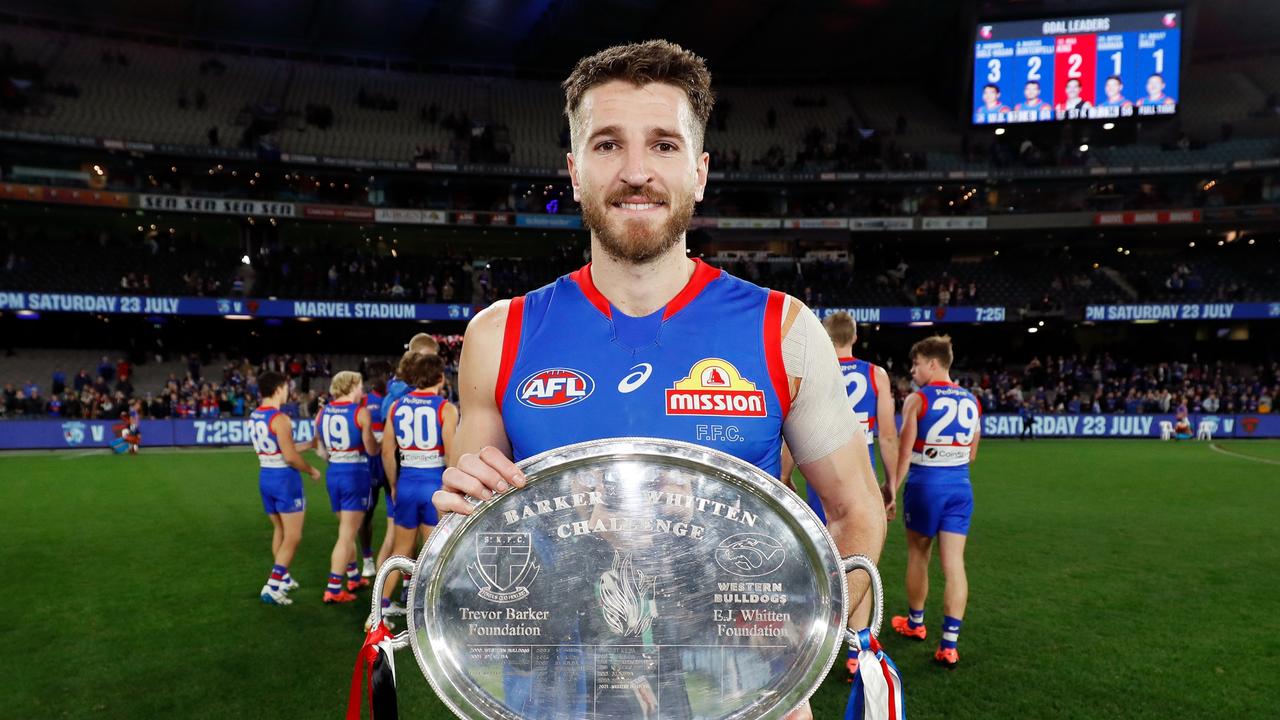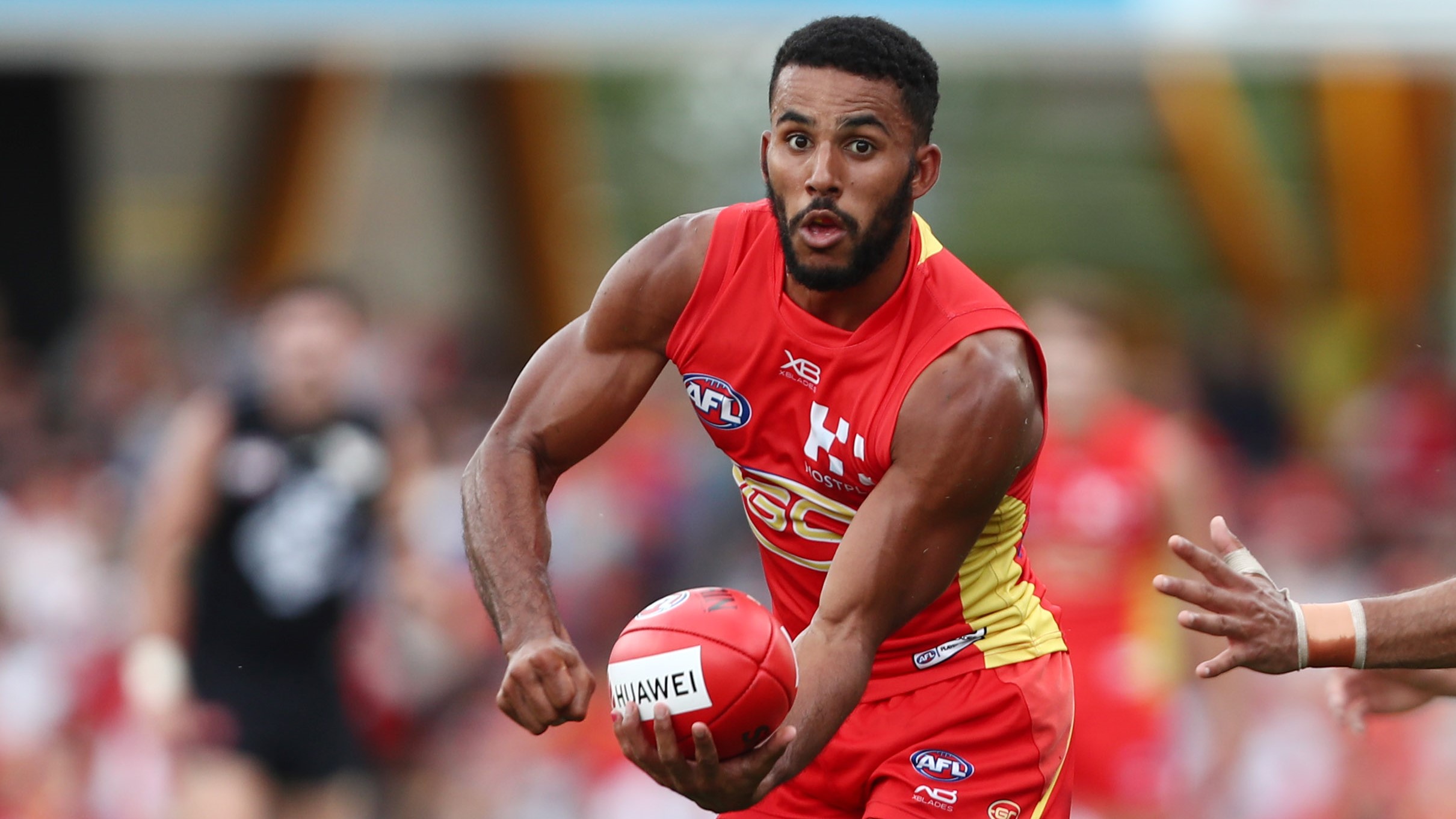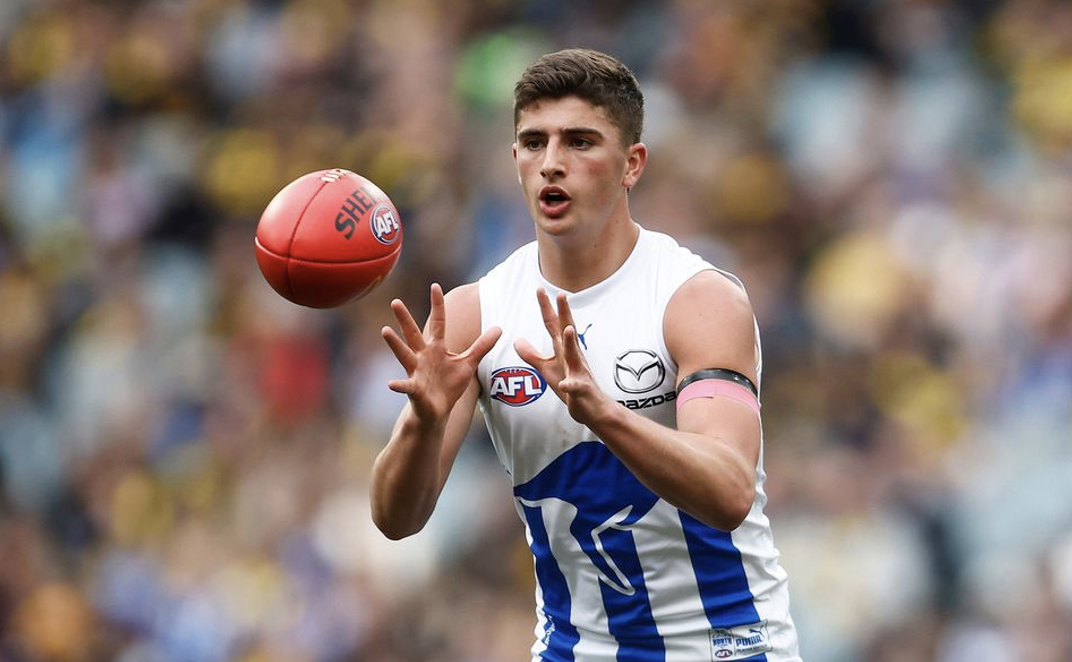- WEEKLY WRAP: Round 1 studs, duds and injuries
- SC PLAYBOOK PODCAST: Weekend wrap, Rd 2 preview
Round one has come and gone and it is now time to ask why am I ranked in the position I am in?
A large part of this will be the performance of the competition’s most highly owned players.
The performance of these players will play a significant part in where you end up each week as they impact the largest number of coaches comparatively.
Miss out on a few value options and thousands of coaches could be surging ahead of you. Avoid the underperformers and watch your ranking climb!
Sign up to SC Playbook for stacks of extra premium articles across the AFL season, including access to our contributor inclusive Whatsapp group where your SuperCoach dilemmas can be answered minutes before kick off!
Embed from Getty ImagesTo measure the impact of each player let’s create a metric called ‘Pain/Gain points’.
Firstly, we take a given player’s price and divide it by 5441 to calculate their expected score (e.g. Max Gawn at $657k is expected to score 120.8).
We then measure this against the player’s actual score (e.g. Max Gawn 92) and work out the difference (-28.8 for big Max).
This difference multiplied by ownership to give a number for total ‘Pain/Gain points’ (for big Max this is -28.8 * 91,575 owners = -2.6 million points – that’s a lot of points).
For simplicity, I will look at premium and mid-price players only as the rookies should all over perform their price points.
Embed from Getty ImagesThe gainers:
- These are the players you want to have selected and helped many a coach move up the rankings (and you are likely thinking how you will trade them in right now).
- Rowell is the standout here – scoring 94 points above his price point and rewarding the 51% of owners that went with him (I suspect that number will go up …).
- Someone like Petracca who scored 163 helped their coaches a great deal, but was only in 11% of teams – not owning him didn’t hurt you too much.
- Other highly touted pre-season picks also did well – Coniglio, Neale, Butters and Dunkley. This contributed to the generally high scores seen across the comp.
- Those that did well likely had a couple more players from this list (and probably barrack for Carlton!).
| First Name | Own | Score | Price | Exp. Score | Scoring +/- | Pain / Gain Points |
| Matt Rowell | 51% | 157 | $ 342,900 | 63 | 94 | 7,380,809 |
| Stephen Coniglio | 75% | 80 | $ 261,300 | 48 | 32 | 3,693,356 |
| Lachie Neale | 54% | 140 | $ 543,200 | 100 | 40 | 3,308,507 |
| George Hewett | 32% | 131 | $ 399,000 | 73 | 58 | 2,795,289 |
| Patrick Cripps | 35% | 132 | $ 454,800 | 84 | 48 | 2,613,997 |
| Zak Butters | 47% | 114 | $ 443,600 | 82 | 32 | 2,360,901 |
| Will Brodie | 40% | 76 | $ 224,300 | 41 | 35 | 2,107,084 |
| Isaac Heeney | 20% | 141 | $ 454,500 | 84 | 57 | 1,718,949 |
| Josh Dunkley | 60% | 117 | $ 558,200 | 103 | 14 | 1,319,473 |
| Jade Gresham | 15% | 109 | $ 299,000 | 55 | 54 | 1,260,142 |
The painful:
- These are the players you want to have avoided and importantly – chosen a player instead that performed or exceeded their price point.
- Gawn is the big standout here – costing a whopping 2.6 million points across the competition. Hold fire on the trade though – he should come good.
- Going with someone such as Sicily or Hewett instead of the underperforming defenders below would have gone a long way to helping your ranking. It would have been very easy to have all three of Crisp, Whitfield and Ridley in your side (ouch!).
- Whilst some might be happy with a score of 112 from Oliver, you paid for 123 points!
| First Name | Own | Score | Price | Exp. Score | Scoring +/- | Pain Points |
| Max Gawn | 60% | 92 | $ 657,400 | 121 | -29 | -2,639,519 |
| Jack Crisp | 40% | 69 | $ 571,000 | 105 | -36 | -2,210,933 |
| Jack Steele | 36% | 87 | $ 685,800 | 126 | -39 | -2,126,068 |
| Lachie Whitfield | 53% | 73 | $ 502,600 | 92 | -19 | -1,577,941 |
| Jordan Ridley | 22% | 68 | $ 537,100 | 99 | -31 | -1,055,316 |
| Daniel Rich | 11% | 71 | $ 582,700 | 107 | -36 | -581,344 |
| Clayton Oliver | 32% | 112 | $ 672,000 | 124 | -12 | -571,876 |
| Tom Mitchell | 8% | 80 | $ 638,100 | 117 | -37 | -463,151 |
| N. Naitanui | 5% | 63 | $ 627,400 | 115 | -52 | -385,149 |
| Luke Ryan | 9% | 70 | $ 540,300 | 99 | -29 | -382,046 |
Lastly, it is important to remember that one game does not make a trend.
The underperformers should revert back closer to their expected scoring and Matt Rowell probably won’t go 150+ each week (well, maybe).
By all means make a trade if you have an injury, but otherwise try to hold off on that annual Isaac Heeney trade at least until after round two before prices start to change.
FANCY A SAME-GAME MULTI? Topsport offer the best in the business, where the market odds ACTUALLY add up. Give it a try, compare to other bookies, and see the difference for yourself! Use the code ‘SCPLAYBOOK’ when signing up.







This is actually fantastic! Well done! The kind of stats/strategic analysis that the SC community can really benefit from.
I do think that a slight tweak could be good here if it’s possible. I think the relevant number to multiply the actual-expected score differential by is not always the number of coaches that own the player. Maybe you’ve already considered this and maybe it’s too complicated to execute, however, I believe the relevant number is the amount of coaches that are on the other side of the coin to the observer. Let me explain, continuing on with the Gawn example. As a Gawn owner, his low score actually becomes less “painful” the more highly owned he is. If 100% of coaches have Gawn, then his score is not painful at all, because everyone has him. If 1% of coaches own Gawn, then his low score becomes extremely “painful” for those 1% of coaches, because nearly everyone else gets an advantage. However, with the current formula, the “pain” number gets bigger with a higher ownership. The “pain” number should get smaller with higher ownership. My suggestion would be to have two figures for each player, one for owners to look at, and one for non owners to look at. Also I think to help avoid confusion, rather than calling them “pain” or “gain” points, go with one name that is neutral (neither negative nor positive) like “contribution points” or something to that effect, and let the positive or negative nature of the number indicate whether the contribution has been positive or negative. The relevant “contribution points” figure to look at for OWNERS of a player would have their actual-expected score differential multiplied by how many coaches DON’T own that player, and the relevant “contribution points” figure to look at for NON-OWNERS of a player would have their actual-expected score differential multiplied by the number of coaches that DO own that player. Hope that makes sense. 🙂